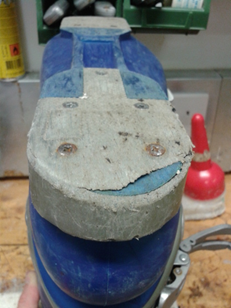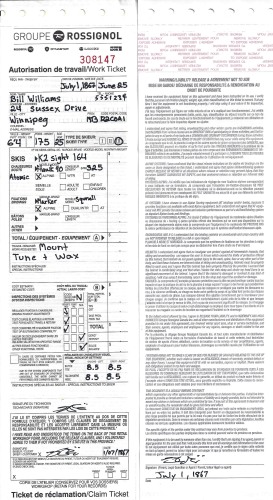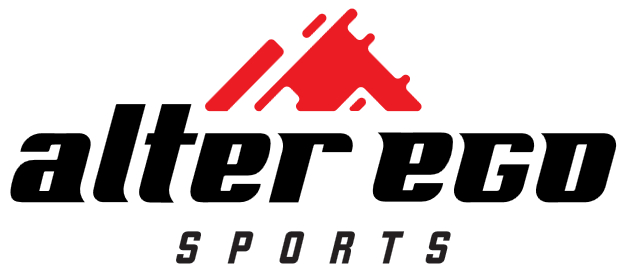ALPINE BOOT TO BINDING ADJUSTMENTS
Unsure of what a boot to binding adjustment is? Why do you need one? Not sure what you need to bring? We're here to help.
A boot to binding adjustment is a series of tests and procedures to ensure a safe and functional interface between the boot and the binding. These ensure that the boot is securely held in place by the binding when in use and that the bindings will safely disengage when desired. How much force is required to disengage the binding is potentially different for every rider, so obtaining the correct information is extremely important! How much force is required to get out of the binding is referred to as the DIN setting of the binding. The more force required, the higher the DIN setting. Brake functionality is also checked, as nobody wants to chase a ski down the hill!

source: https://profeet.co.uk/plus/when-replace-my-ski-boots/
WHY DO YOU NEED ONE?
There are a number of reasons why a boot to binding adjustment may be required. If any of them apply to you, it is essential for your safety that these adjustments are made.
- NEW GEAR :: Any time a binding is being moved from one ski to another, a new binding is being installed, or you've purchased new boots, an adjustment will be required.
- GROWTH :: Any significant changes to to height or weight, which can affect your recommended release tension (DIN) required. When in doubt, we can quickly check recommended settings at the beginning of the new ski season and compare with the current configuration.
- EXPERIENCE :: As skiers become more familiar and comfortable, they may find that the current release tension (DIN) is insufficient. More aggressive skiers require higher settings than those who are more cautious.
- AGE :: Adjustments to that DIN setting are also made for skiers age 9 and under, as well as 50 and over. Celebrate these birthdays with a visit to your friendly neighborhood ski shop! OK, that might be overkill, but at least come and see us before you get out on the hill.
- CUSTOMIZATION :: Lastly, a skier can request a specific release value if they find the recommended value to be unsatisfactory. In doing so, the skier assumes liability for any injury caused by using a DIN setting other than the recommended value.
WHAT DO WE NEED FROM YOU?
1. BOTH BOOTS
We will need BOTH boots to adjust the bindings. Both boots need to be tested for secure hold and safe release within the binding.
2. BOTH SKIS
Same as above, we need to make sure both boots are tested for secure hold and release.
3. MAKE AND MODEL OF BINDING
Our technicians are required to take a certification test for each brand of bindings that we work on, and each brand has a master list of bindings that are covered under that certification. This list generally goes back about ten years. As such, an older binding may not be considered serviceable despite being a brand that we are certified for. Make and model should be all we need to determine if your binding is still covered. Check out the master list; or you can call, and our tech staff will walk you through it.
4. SKIER INFO
We will need the following information...
- Name
- Phone Number
- Address
- City
- Province
- Postal Code
- Email address
- Height (No estimations!)
- Weight (No estimations!)
- Age
- Skier type* (based on how aggressive you WILL be skiing, not how aggressive you CAN ski)
If you are getting bindings mounted or remounted, we will also need to know where on the ski you want them mounted (i.e centred or setback).
If you are unsure of skier type, check the list below! We cannot provide guidance on what skier type YOU should be, we can only explain the differences between each type so that you an make an educated decision.
Skier Type I
Cautious skiing on smooth slopes of gentle to moderate pitch.
Receive lower than average release/retention settings. This corresponds to an increased risk of inadvertent binding release in order to gain releasability in a fall.
Type I settings apply to entry level skiers uncertain of their classification.
Skier Type II
Skiers not classified as Type I or Type III.
Skiers who designate themselves as Type II receive average release/retention settings appropriate for most recreational skiing.
Skier Type III
Fast skiing on slopes of moderate to steep pitch.
Receive higher than average release/retention settings. This corresponds to decreased releasability in a fall in order to gain a decreased risk of inadvertent binding release.
This classification is not recommended for skiers 47lb (21kg) and under.
Indemnification Lists
Every single binding we are legally indemnified to work on is listed in the PDFs below. If your binding is not on this list, we are unfortunately unable to make any adjustments to your binding. If you are unsure or want some guidance, feel free to contact us.
*If you are inquiring about ROXY bindings, be sure to check PDF 1 and 2, if it is on at least one of them we are indemnified.*

PICKUP PROCEDURE
- When you come to pick up your freshly adjusted gear, the first thing you'll need to do is recheck the info you provided when you dropped off your equipment.
- Our staff will verify that the release value on the bindings match the release values on the work ticket. They will also explain the functionality of the binding, and provide an owners manual if it's a brand new binding. You're all set. High fives optional.
- After you've done this, we'll need your signature on the form indicating that the information provided is accurate, and accepting the recommended release values based off of that information. It also lists the inherent dangers of going very fast down a hill.
- If picking up for someone else, you will have to sign on the reverse to acknowledge that you are acting as an agent, parent, or legal guardian for the user.
